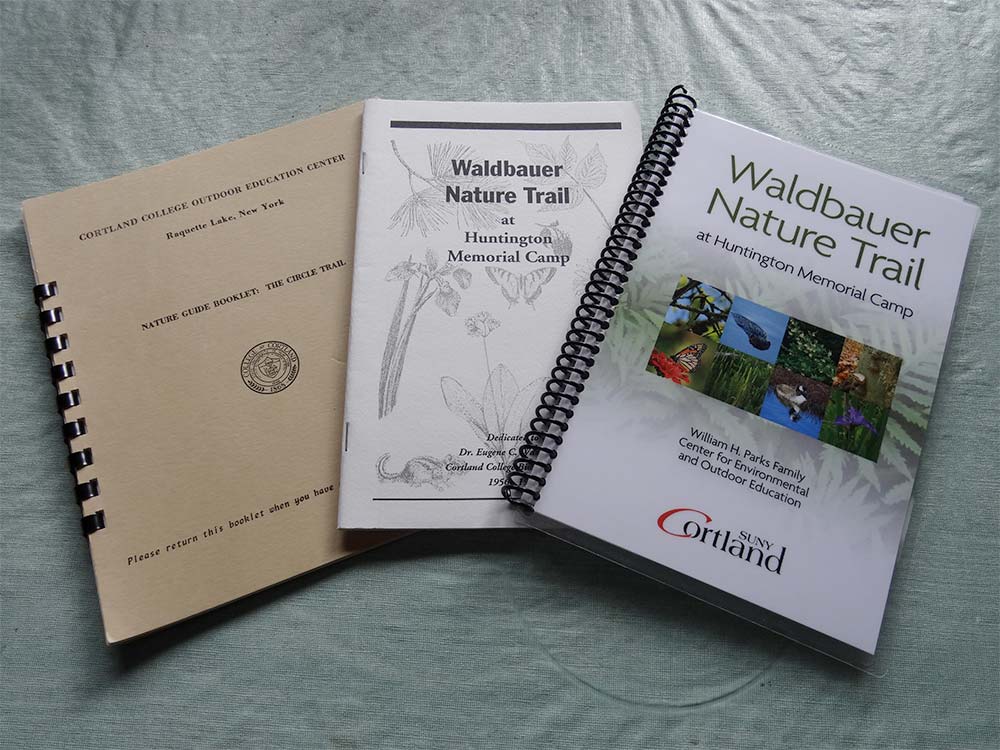By Steve Broyles, professor and department chair, biological sciences
Along with the bouquet of balsam needles, the sweet sound of hermit thrush echoes through the Adirondack forest. The bird sings to train the next generation of singers. Without doubt, Harlan “Gold” Metcalf and Walter Thurber heard the ancestors of our current thrushes as they disembarked from a canoe in 1947 to unlock the future of natural history exploration at Raquette Lake.
Just as the hermit thrush song is culturally inherited from one generation to the next, knowledge of nature has been passed along to generations of Cortland naturalists from Metcalf and Thurber to George Fuge, the late director emeritus of the Outdoor Education Center, Eugene Waldbauer, the late professor emeritus of biological sciences, Tim Baroni, SUNY distinguished professor emeritus of biological sciences, Larry Klotz, distinguished teaching professor emeritus of biological science, and the thousands of students, staff, faculty and alumni who have walked the nature trail at Camp Huntington. I too have inherited the richness of the Adirondack wilderness from these giants of natural history.
The original “Circle Trail” field guide by Metcalf and students provided natural history and species recognition to the Adirondack classroom. The guide reflects an era when knowing the utilitarian and cultural uses of plants and animals was of great interest. White pine was used for shingles in colonial times. Beech leaves were used as a stuffing substitute in mattresses when straw had grown musty. Balsam sap provided a varnish for watercolors and was a medicinal remedy for sore throats.
The “Waldbauer Nature Trail Guide” added meticulous line drawings to the wonderful species descriptions. Waldbauer lived the Adirondack dream for more than three decades at SUNY Cortland and during the summers at Raquette Lake. He could be spotted working along the trail, moving plants to accommodate the trail markers and highlighting many of the unique plants and animals.
These past three years represent the turning of another leaf as Cortland biology students produced the newest edition, the “Waldbauer Nature Trail” guide. Where the “Circle Trail” integrates history and use of plants, and the printed “Waldbauer Nature Trail Guide” solidified plant identification, the digital and color guide of the latest edition focuses on ecology, species interactions and evolution. The final product showcases the leadership of Klotz and the fine writing and organizational skills of Ben Haller.
 The guide integrates modern science discussions into the Adirondack interpretation with climate change, acid precipitation and biomimicry. The printed guide has color photographs and a modern design, while the responsive design of the online version is easy to follow on various electronic devices. A long list of photographers — Baroni; Peter Ducey, professor, biological sciences; Michael Hough, lecturer, biological sciences and Rhonda Pitoniak — graciously donated their best color images to bring the guide to life.
The guide integrates modern science discussions into the Adirondack interpretation with climate change, acid precipitation and biomimicry. The printed guide has color photographs and a modern design, while the responsive design of the online version is easy to follow on various electronic devices. A long list of photographers — Baroni; Peter Ducey, professor, biological sciences; Michael Hough, lecturer, biological sciences and Rhonda Pitoniak — graciously donated their best color images to bring the guide to life.
The latest “Waldbauer Nature Trail” guide is dedicated to Waldbauer. His reputation as an exceptional educator and spirited naturalist will live on at Camp Huntington. Waldbauer passed in January, but his spirit and fast gait will be remembered with each thrush song and woodpecker drum. (See accompanying article)
We would also like to thank Michelle Cryan, web and digital marketing manager, Ingrid Jordak, content manager, and Anthony DeRado, creative services manager, for their tech-savvy skills in web design and hardcopy production. The online version can be found at cortland.edu/waldbauer-trail. The colorful hardcopy can be borrowed from our libraries during your next visit to Raquette Lake.